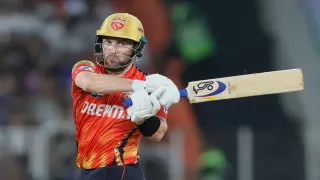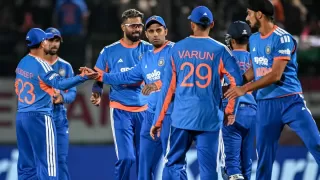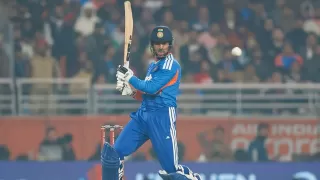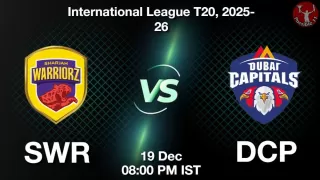Types of Bowling in Cricket: A to Z Guide for Spin and Fast Bowling

Bowlers for cricket may be divided into these two distinct groups: Fast bowlers use seam and swing methods in addition to their pace to have an edge over the batsman.
Conversely, slow bowlers need to apply spin to the ball to have any chance of success since their slow bowling style lacks the speed to test hitters. Leg spinners and off-spinners are the two classifications of spin bowlers.
Types of Bowling in Cricket
Bowlers are chosen based on their performance history as well as their playing circumstances, which can either accentuate or minimize their technical advantages. A cricket team still has to choose a well-balanced assault with a combination of quick and slow bowling notwithstanding such circumstances.
I'll walk you through these ostensibly intricate classifications and subcategories that help provide a more precise definition of cricket bowlers. Continue reading if you're looking for a comprehensive list of cricket delivery types.
Techniques of Bowling
A bowler makes a "delivery" when they let go of the ball. In actuality, he or she is passing the ball to the batsman on the other side of the field. A commentator may state that there are four balls left in the over or that there are two deliveries left. The terms "balls" and "deliveries" are equally appropriate.
Fast bowlers use several strategies to have an advantage over the batsman. These consist of sheer speed, swing, and seam. The quickest bowlers could just try to get wickets by using their quickness. Many hitters become uneasy when speedier players produce offerings that surpass 90 miles per hour.
However, if the ball doesn't stray in the air or off the surface, speed might not be sufficient on its own. A speedier bowler will thus primarily use swing and seam as part of their arsenal.
All slow bowlers need to do is get the ball moving off the pitch. The object is to get the ball to spin into or away from the batter after it pitches since they do not throw the ball quickly. It can be quite difficult for the batsman to respond quickly enough to play the ball properly if the circumstances are favourable and the spin is strong and rapid.
Take a closer look at those methods in the following section.
Spin and Fast Bowling
Types of Spin Bowling
1. Off Spinners:-A right-arm bowler uses their delivery hand's first and second fingers to apply spin to the ball. For a right-handed hitter, the goal is to shift the ball from the off side to the leg side.

These are all the deliveries that an off-spinner can bowl; they do, however, come in a variety of forms.
Off Break:This delivery of off-spinner's stock. It should spin from leg to off for a left-handed batter, while it will spin from the offside to the legside for a right-handed batsman.
Doosra:When an off-spinner delivers a doosra, the goal is for the ball to spin in the other way from his normal delivery. The ball is now gripped between the ring and index fingers thanks to a grip adjustment. The ball should then spin for a right-handed batsman from leg to off and a left-handed batsman from leg to off.
Top spinner:When a bowler delivers a ball, a great spinner will cause them to twist their fingers. The ball will probably go straight on, but there will be more loops and the batter will probably expect some spin.
Carrom Ball:When a bowler flicks the ball between his thumb and bent middle finger, he creates a Carrom ball. The ball can act unpredictably if the skill is acquired, but it is challenging to control. The spin can move straight on, from off to leg, or from leg to off.
When spin is the outcome, it might be very noticeable.
Arm Ball:When releasing an arm ball, the off-spinner runs their fingertips along the rear of the ball while maintaining the seam straight. The delivery should proceed directly "with the arm" and is less prone to spin.
The bowler might just get some outswing if they maintain that seam erect.
Teesra:The term "Tesra" refers to a more contemporary technique of giving the ball backspin. When the ball is delivered, an off-spinner will roll their fingers along the back of the ball but not twist their hand.
Consequently, it is possible to fool the batter into believing that the ball will spin when it should proceed straight on its path.
2. Leg Spin Bowling:-One of those two primary categories has to do with leg spin bowling. There are fewer leg spinners in cricket than off spinners since this is a more difficult ability to acquire. But, the leg-spin that is imparted may be more formidable and present a bigger obstacle for any batter.

With the middle and index fingers' uppermost joints gripping the ball across the seam, the grip is much more intricate. The ball then lies between the thumb and the third finger. The bowler's wrist flicks and the third finger rotates the ball counterclockwise as they deliver the ball.
This kind of bowler is frequently referred to as a wrist spinner because of the way the wrist functions in this method. Furthermore, left-arm leg spinners are often referred to as "Chinaman bowlers," albeit the cricket world is gradually losing use of this name.
These are some examples of traditional leg spin delivery:
Leg Break:This is the traditional leg spinner stock ball. The bowler uses their wrist to spin the ball from leg to off to a right-hander using the method mentioned above.
Googly:The Googly of a leg spinner moves against the direction of their stock ball. Hence, for a right-handed batter, the ball will spin from off to leg, while for a left-handed batsman, the opposite would happen.
Given that it is pitched with the same leg spin grip, a googly can fool the batsman. That reverse spin may be produced with one more wrist twist or finger flick.
Flicker Ball:The leg spinner's carrom ball is called a flicker. It may rotate in any direction or go straight forward using the same thumb and bent finger grip.
Slider:Another name for the slider is a top spinner. The bowler uses the same grip, but at the delivery point, they roll their fingertips along the side of the ball. This can produce backspin and sidespin, enabling the ball to leave the pitch rapidly and travel straight ahead of the arm.
Flipper:Leg spinners are nearly the only ones that employ this delivery style. The bowler will grasp the ball between their thumb and first two fingers and attempt to "squeeze" it out at the delivery point to produce a flipper.
The outcome is backspin, which makes the ball difficult to play and can stay quite low even when it travels straight ahead.
Types of Fast Bowling
Since the entire fast bowling action is so intricate, almost no major muscle group is not used to produce that level of velocity, from the run-up to the follow-through. But when it comes to quick bowling, the muscles in your core, legs (especially the calves), abs, arms (particularly the shoulders, rotator cuff, biceps, wrists, and elbows), and abdomen are all crucial.
 1. Pace:
1. Pace: To rattle a batter and claim wickets, pace bowlers practically always rely on their quickness. The quickest bowlers in the game have delivery speeds of over ninety miles per hour, which is more than enough to match the finest hitters in cricket.
Less movement occurs off the pitch and in the air, which might be a problem with speed. World-class batters will face fewer difficulties against speed than lower-order batsmen or those who are out of form. Because of this, a lot of bowlers who are faster will try to use other delivery methods like seam or swing bowling.
BouncerA bouncer is a delivery with a short pitch that is intended to strike the batter in the upper body. If it hits a hitter, it might cause a false shot or make them uneasy.
Slower BallThis is a general phrase for all kinds of delivery delays. It is best to hide a slower ball so that the batter believes it is approaching at a regular pace.
Leg CutterThe grip of a leg spinner is used to bowl a leg cutter. With the increased pace acting as an extra weapon, the goal is to shift the ball from leg to off for a right-handed batsman.
Off CutterThe faster bowler's equivalent of a stock off-spinner's delivery is called an off-cutter. It ought to transition from off to leg faster.
YorkerA delivery that is meant to pitch extremely full, nearly under the batsman's bat, is called a yorker ball. Playing the yorker may be very challenging if done properly and quickly.
KnuckleballKnuckleball is a particular kind of sluggish delivery. Instead of holding the ball deep inside his fingers, the bowler holds it between his knuckles. To trick the batter, the ball appears to emerge at the same speed but moves more slowly in the air.
2. Seam Bowling:A cricket ball's seam serves as both a structural support and a vital tool in the arsenal of a fast bowler. If the ball touches the seam as it lands after being thrown, it may leave the pitch at an odd angle.
Because the ball goes off the pitch and not through the air, the batter has less time to react. That being said, when applied properly, seam bowling can be a very powerful technique.
3. Swing Bowling:Swing bowlers employ methods that cause the ball to move after it is thrown. The ball can go toward the batsman's stumps with an inswing, or it can move away from the batter and into the slip cordon with an outswing.
Reverse Swing: Unlike traditional swing, reverse swing causes the ball to go in an entirely other direction. This often occurs when the ball ages and one side experiences severe deterioration.
Also Read: Top 10 Highest Paid Footballer in 2023-24











Give Your Feedback